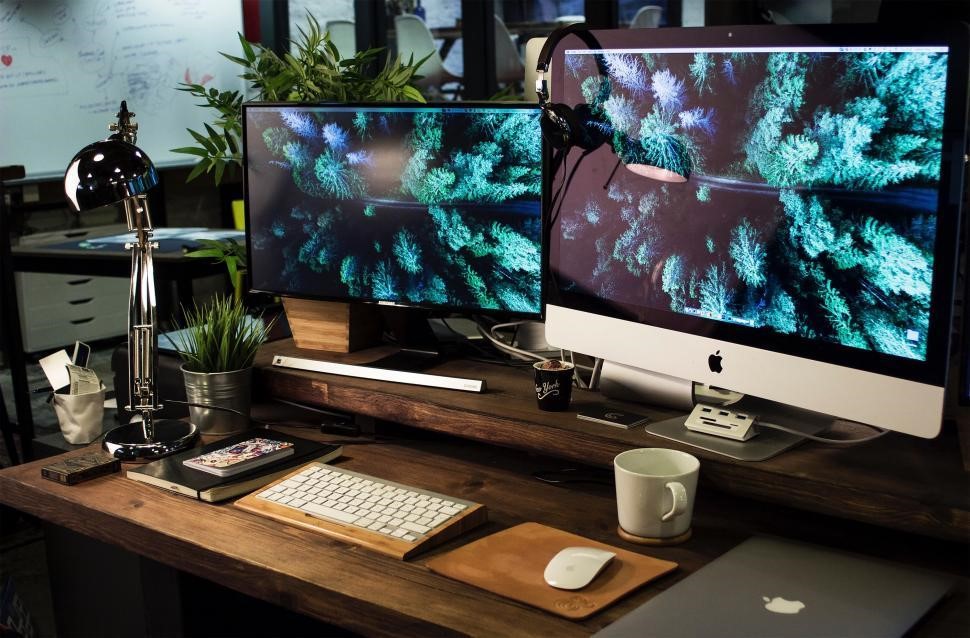1080p vs 1440p: Which Budget Monitor Should You Buy?
8/14/2025 · Monitors · 7 min

TL;DR
- Under $150 you will mostly find 1080p models. They are the best value for fast refresh (120–165 Hz) and gaming responsiveness.
- 1440p looks noticeably sharper (about 78% more pixels than 1080p) but at this price is rare and often limited to 75–100 Hz. Great for text clarity and productivity when you can snag a deal.
- Best budget picks by use case:
- Esports/fast games: 24" 1080p 144–165 Hz with FreeSync/G-Sync Compatible.
- Work + casual games: 27" 1440p 75–100 Hz (if on sale near your budget) or 24–27" 1080p 75–100 Hz.
- Movies/contrast first: 27" 1080p VA 75 Hz.
Resolution & Clarity
- 1080p (1920×1080): Cheapest and easiest on the GPU. Sharp on 24"; soft on 27" for text.
- 1440p (2560×1440): Crisper UI and fonts; ideal at 27". Renders ~77.8% more pixels than 1080p, so you need more GPU power for the same frame rate.
Size & Pixel Density (approx.)
- 24" 1080p ≈ 92 PPI: crisp enough for most.
- 27" 1080p ≈ 82 PPI: text can look a bit soft.
- 27" 1440p ≈ 108 PPI: sweet spot for sharpness.
- 24" 1440p ≈ 122 PPI: very sharp; UI scaling may help.
Refresh Rate & Response
> If you play competitively, a 1080p 144–165 Hz panel is usually a bigger upgrade than jumping to 1440p at low refresh.
- 60–75 Hz: fine for office, casual use.
- 120–165 Hz: smoother scrolling and gaming; common for 1080p in this budget.
- 240 Hz: usually above this price range.
Panel Types
- IPS: Best color accuracy and viewing angles; blacks are lighter.
- VA: High native contrast (deeper blacks); can show more motion blur.
- TN: Lowest cost and fast response, but washed colors and narrow angles. Only consider if price is unbeatable and you need speed.
Adaptive Sync (Tear-Free Gaming)
- Look for AMD FreeSync or G-Sync Compatible. It matches the monitor to the game’s frame rate to reduce tearing and stutter. A wide working range (e.g., 48–144 Hz) is ideal.
Ports & Cables (quick guide)
- 1080p 144 Hz: Prefer DisplayPort 1.2+ or HDMI 2.0+. Older HDMI may cap you at 120 Hz or 60 Hz depending on the device.
- 1440p 144 Hz: Usually needs DP 1.2/1.4; budget 1440p models near this price are often 75–100 Hz anyway.
- Use the cable included with the monitor when possible; cheap cables can limit refresh.
GPU Considerations
- Moving from 1080p to 1440p increases pixel count by ~78%. Expect lower FPS unless you reduce settings or have a stronger GPU.
- Consoles often run best at 1080p 60–120 Hz. Some support 1440p, but check your model.
Which Should You Buy?
- Choose 1080p if you want the fastest refresh and the lowest price, especially for competitive titles.
- Choose 1440p if you value sharper text and workspace, and you find a deal near your budget (or you don’t need >100 Hz).
Buying Checklist
- Size & desk depth: 24" fits small desks; 27" needs more distance.
- Refresh target: 75 Hz for office; 120–165 Hz for gaming.
- Panel: IPS for color, VA for contrast.
- Sync: FreeSync/G-Sync Compatible.
- Ports: DP or HDMI 2.0+ for high refresh.
- Stand & VESA: Height/tilt or 75×75/100×100 mount if needed.
Bottom Line
On a tight budget, a good 1080p 144–165 Hz monitor delivers the most noticeable upgrade for gaming and smooth everyday use. If you spot a 27" 1440p in your price range, it’s a great pick for text clarity and productivity—just be realistic about refresh rate and GPU headroom.
Found this helpful? Check our curated picks on the home page.